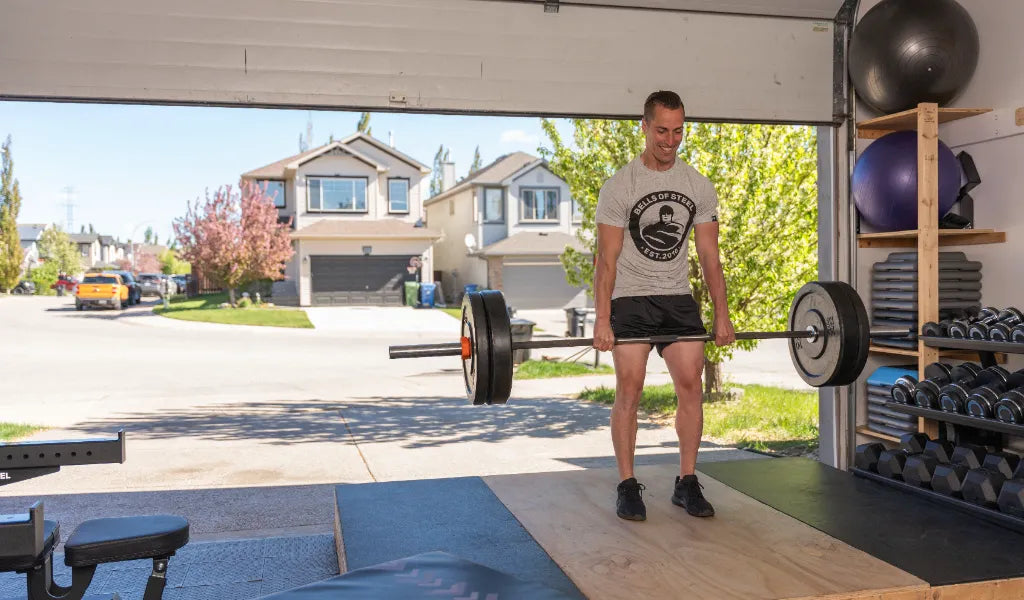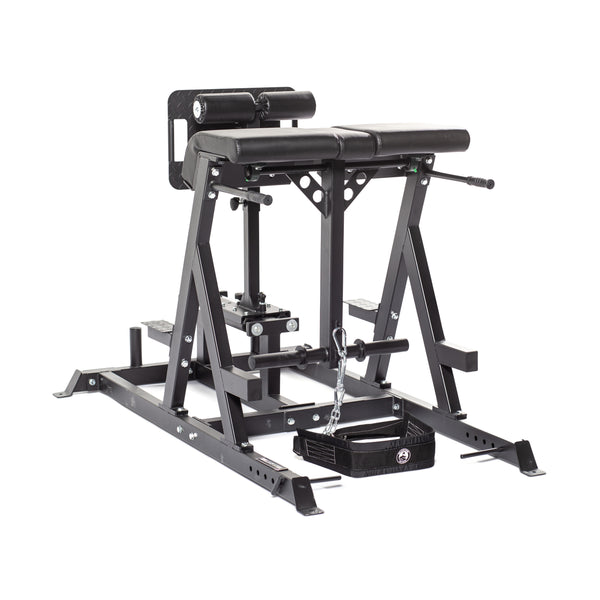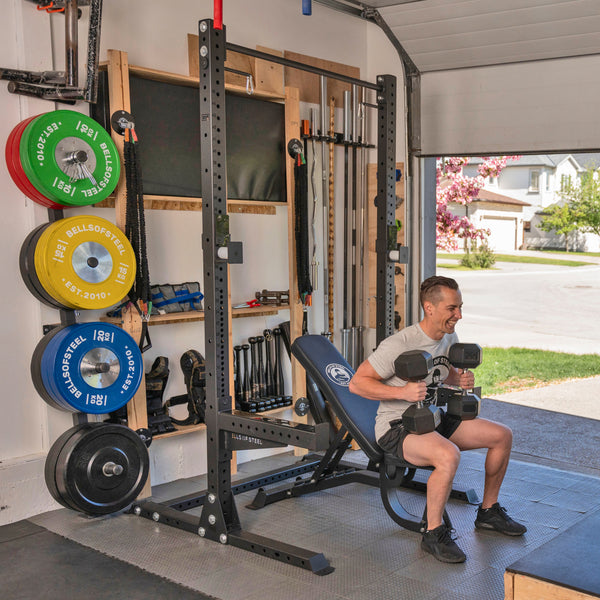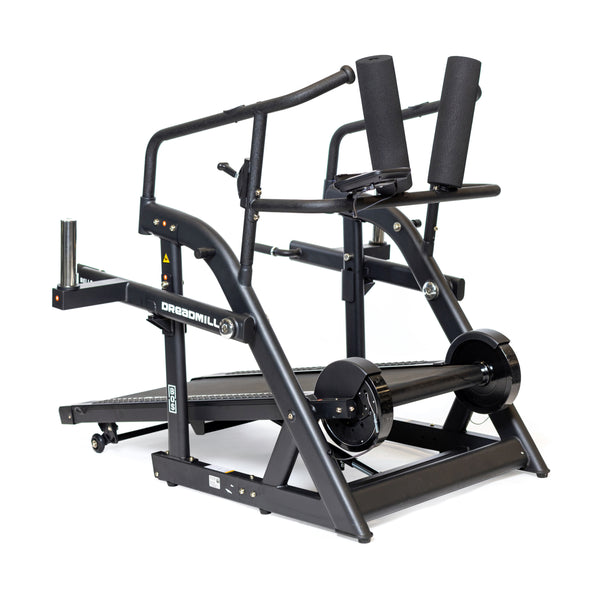Welcome to the glorious chaos of starting your home gym, where dreams are made of iron, and every purchase feels like a major life decision. With thousands of gadgets out there, it’s easy to go from “I just want to squat in peace” to “do I need a reverse hyper, a $600 set of kettlebells, and a barbell that costs more than my car?”
Let’s clear the chalk dust and get down to brass (or steel) tacks. One size does not fit all. The best gear depends on your training style, space, and goals. This guide covers what to buy first, what to skip, what to scale up to, and how to build the ultimate setup that suits your strength journey.
Why "Needs" Vary By Training Style
Your training goals are the GPS for your home gym shopping list. Here’s how your equipment priorities change based on what kind of lifter you are.
Strength Training (Powerlifting & General Strength)
Start with:
-
Barbell (standard or shorty, depending on space)
-
Plates (bumper or iron — we won’t judge)
- Squat stand or power rack
- Flat bench
- Deadlift platform or floor-safe setup
Upgrade later with:
- Adjustable bench
-
Specialty bars (like trap bars or safety squat bars)
- Cable machines
-
Belt squat or leg press if you like going leg day mode: activated
Bodybuilding
Start with:
- Adjustable bench
-
Dumbbells (adjustable = space-saving win)
-
Resistance bands for burnouts and warmups
-
Mirror (because flexing is part of the workout)
Upgrade later with:
-
Cable machine or pulley system
-
Preacher curl bench attachment (for those blessed biceps)
- Lat pulldown and row machine
Functional Fitness / Cross-Training
Start with:
- Kettlebells
- Medicine balls or slam balls
- Pull-up bar
- Plyo box
-
Timer (because EMOMs and AMRAPs aren’t going to yell at you on their own)
Upgrade later with:
-
Sled or Sled Treadmill (Known as the infamous Dreadmill around these parts)
- GHD machine
- Battle ropes
-
Climbing rope if your ceilings can handle it (and your insurance policy allows)
General Fitness & Weight Loss
Start with:
Upgrade later with:
-
Cardio machine (rower, treadmill, bike)
- Adjustable bench
- Compact cable trainer
-
A wall-mounted TV for streaming workouts while you curse lunges. Don’t forget your Richard Simmons outfit.
Your First Gym Setup: Must-Haves vs. Save-for-Laters
Must-Have Essentials for Most Beginners
-
Barbell: The backbone of a home gym. Opt for a 7-foot Olympic bar, or go shorty (it’s your birthday) if you’re tight on space.
-
Weight Plates: Choose bumper plates if you’re dropping, iron if you’re feeling traditional (and have quiet floors).
-
Rack or Stand: A squat stand for minimalists, a full power rack for maximalists. Choose one that fits your space and your goals.
-
Adjustable Bench: Flat is fine, adjustable is better. More angles, more gains.
-
Dumbbells or Kettlebells: Adjustable dumbbells can cover a lot of ground. Kettlebells are excellent for swings, squats, and farmer’s carries.
-
Mat or Flooring: Save your joints. Save your floor. Save your security deposit.
Nice-to-Haves You Can Add Later
-
Cable System: Great for accessory work, curls, and tricep pushdowns you’ll pretend are "just for mobility."
-
Cardio Gear: Treadmill, rower, or bike depending on preference and noise tolerance.
-
Storage Solutions: Keep your gear off the floor and your toes bruise-free.
-
Mirrors: For form-checking. And okay, occasional flexing.
-
Chalk Bowl: Essential if you lift heavy or just want to feel like you’re in a Rocky montage.
What to Skip (at First)
-
Smith Machine: Great for some, but not essential for most. Takes up space. Costs $$$.
-
Toning Belts & Ab Rockers: Spoiler alert: they don’t work.
-
Full Isolation Machines: Unless you're bodybuilding with space to spare, you don’t need a dedicated leg press machine on Day 1.
Equipment Picks Based on Space
Small Space Lifters (Apartment dwellers, closet-crushers):
-
Short barbells (like the Bells of Steel Short Utility Bar)
-
Foldable squat rack
-
Adjustable dumbbells
-
Bumper plates
-
Wall-mounted storage
Garage Warriors (with vehicles sharing the turf):
-
Folding rack or wall-mounted rack
-
Bench with wheels
-
Weight tree or vertical plate storage
-
Weather-resistant flooring
Spare Bedroom Gym-goers:
-
Power rack with storage pegs
-
Compact cable attachment
-
Dumbbells under the bed (for stealth gains)
-
Fan (it gets toasty fast)
Choosing Equipment Based on Budget
Budget Setup
-
Adjustable dumbbells or kettlebells
-
Basic flat bench
-
Resistance bands
-
Simple squat stand
-
A used barbell and plates (keep an eye on marketplace steals)
Mid-Tier Setup
- Olympic barbell
- New bumper plates
-
Basic power rack with pull-up bar
-
Adjustable bench
-
Dumbbell set
Premium Setup
- Commercial-grade power rack
-
Multiple specialty bars
-
Cable machine
-
Leg machines
-
Cardio machine
-
Dedicated chalk corner for drama
FAQs: The Iron Clad Truth
Q: Do I need a barbell to start?
A: Nope! Dumbbells or kettlebells will get you moving just fine. But if you’re dreaming of deadlifts or squats that make the floor tremble — yep, time for a barbell.
Q: How much weight should I start with?
A: Light enough to lift with good form, heavy enough to feel it by rep 8–10. If your soul starts leaving your body during warmups, it’s too heavy. If you can do 30 reps while singing, it’s too light.
Q: Can I skip cardio gear?
A: Absolutely. Burpees, jump ropes, and jogging are all fair game for heart-pounding workouts without eating up space.
Q: What’s the most versatile piece of equipment?
A: Probably an Olympic barbell with plates. But adjustable dumbbells are a close second; the Swiss Army knife of lifting.
Q: Is it worth buying used?
A: Heck yes. Iron is iron, and your wallet will thank you. Just check for rust and test the spin on the sleeves if it’s a barbell. And when you’re ready for an upgrade, we’ve got your back (and shoulders, and quads, and…)
Final Thoughts: Build It One Plate at a Time
The best home gym isn’t the biggest or flashiest, it’s the one you actually use. Start simple, buy quality, and upgrade when your gains demand it. Whether you’re lifting in a basement bunker or a chic living room gym, the right tools are out there for every lifter and every budget.
And if it fits your goals, your space, and your vibe? That’s a home gym PR.




